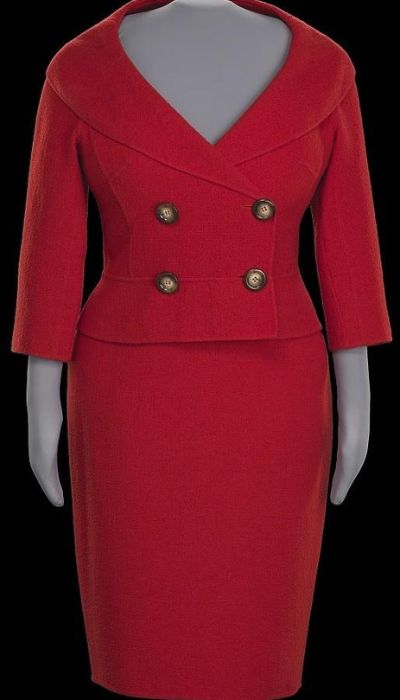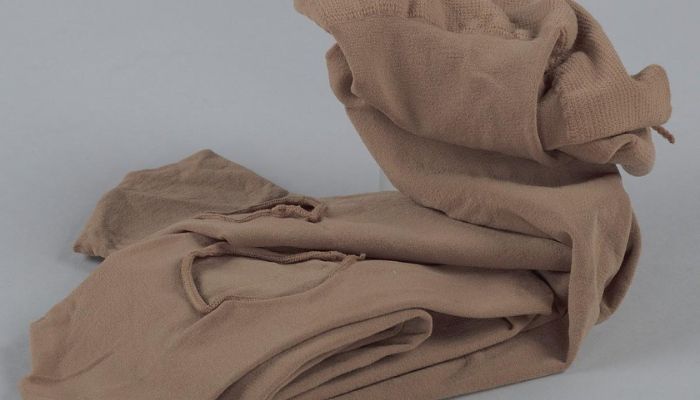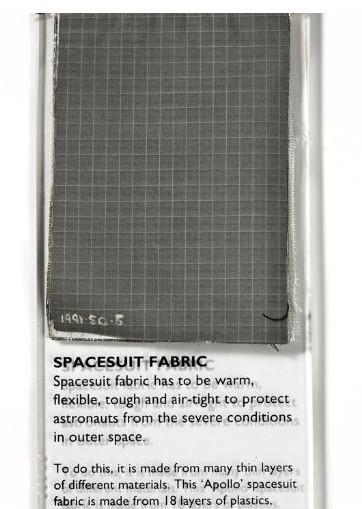Nylon, a synthetic polymer, is a versatile fabric widely used in various applications. Primarily made from polyamide, a type of plastic, nylon is known for its strength and flexibility.
| Fiber Source | Synthetic, derived from petroleum-based chemicals |
| Weaving Patterns | Various; often used in blends with other fabrics |
| Dominant Colors | Wide range, lustrous and adaptable to dyeing |
| Texture Spectrum | Ranges from silky to robust, depending on the weave |
| Breathability Index | Low; not ideal for moisture-wicking |
| Strength & Longevity | Very strong, elastic, and durable; resistant to damage and wear |
| Maintenance Needs | Easy to clean, machine washable, resistant to shrinking |
| Primary Applications | Stockings, sportswear, outdoor gear, parachutes, ropes |
| Ecological Impact | Negative environmental impact; non-biodegradable and energy-intensive in production |
| Major Exporters | Originally the U.S., now largely produced in China, India, Pakistan, and Indonesia |
| Comparable Fabrics | Polyester, Acrylic |
Nylon fabric is produced by melting and extruding polyamide into fibers, which are then woven into textiles. This process results in a strong, synthetic material. Its commonly used in clothing, outdoor gear, and home furnishings. Nylon is particularly favored in the production of hosiery and swimwear.
2. List of Different Types of Nylon Fabrics
- Ripstop Nylon Fabric: Characterized by a special reinforcing technique, ripstop nylon is designed to be resistant to tearing and ripping, making it a robust material for various applications.
- Ballistic Nylon Fabric: Developed initially for military body armor, ballistic nylon is highly durable and offers exceptional tear resistance.
- Nylon Spandex Fabric: This blend marries the strength of nylon with the elasticity of spandex, making it an ideal choice for activewear due to its flexibility and durability.
- Beaver Nylon Fabric: Known for its warmth and softness, beaver nylon is commonly used in winter clothing and outdoor gear, providing comfort in cold conditions.
- Cordura Nylon Fabric: Renowned for its long-lasting durability, Cordura nylon effectively resists abrasions, tears, and scuffs, making it a top choice for rugged use.
- Crinkle Nylon Fabric: This fabric stands out with its textured appearance and is favored in the fashion industry for its unique aesthetic appeal.
- Copper Nylon Fabric: Infused with copper, this type of nylon is utilized for its antimicrobial properties, making it beneficial in various health-related applications.
- Cotton Nylon Fabric: Combining the comfort of cotton with the durability of nylon, this blend offers the best of both worlds, suitable for everyday wear.
- Nylon Lycra Fabric: A fusion of nylon and Lycra, this fabric is known for its stretchability and comfort, commonly used in swimwear and activewear.
- Nylon Oxford Fabric: This is a durable, water-resistant nylon fabric, widely used in products like luggage and tents where robustness and weather resistance are key.
- Recycled Nylon Fabric: Made from reclaimed nylon, this environmentally friendly option helps in reducing waste and energy consumption, aligning with sustainable practices.
- Supplex Nylon Fabric: Supplex nylon combines the soft touch of cotton with the advanced technology of synthetic fibers, offering a comfortable yet high-performance material.
3. Comparisons
Here’s a comparison table for Nylon vs. Polyester based on the characteristics.
| Feature | Nylon | Polyester |
|---|---|---|
| Strength | Typically stronger | Strong but usually less than nylon |
| Stretchability | More stretchable | Less stretchable |
| Heat Resistance | Less heat-resistant | More heat-resistant |
| Drying Speed | Slower to dry | Quick-drying |
| Breathability | Less breathable | More breathable, suitable for hot weather |
| Best Use | General use, stretchable garments | Athletic wear, garments for hot conditions |
This table summarizes the key differences between nylon and polyester in terms of their physical properties and suitability for different applications.
4. Environmental Impact
The production and disposal of nylon raise environmental concerns due to its synthetic nature and longevity. It’s production is energy-intensive and contributes to environmental pollution. Also, nylon is not biodegradable, which poses challenges for waste management.
A study reveals that low-stress mechanical properties and thermal properties of nylon can be influenced by different gas treatments, altering not only surface morphology but also the fabric’s overall characteristics. Research focusing on fiber reinforced concrete (FRC) using nylon fibers suggests that incorporation of nylon can significantly enhance the toughness of concrete post-cracking, indicating nylon’s potential in construction applications
Nylon fabric is typically BPA free, but concerns remain regarding other chemicals used in its production. Yet, there are concerns about the release of microplastics and other chemicals from nylon, especially during washing.
Using recycled nylon reduces environmental impact and promotes sustainability.
5. Nylon Characteristics
Nylon is known for its strength, resistance to damage, and flexibility, making it a versatile choice for various applications. Nylon is highly durable, resistant to tears and abrasions. Innovations in nylon fabric include the development of conductive flexible textiles using silver nanoparticles.
A study on surface modification of nylon for enhanced performance shows that corona treatment can optimize nano cohesion in nylon, improving its antibacterial resistance, dye absorption, and UV-blocking characteristics
Nylon has a moderate heat resistance but can melt at high temperatures. It’s generally not itchy and is considered comfortable for most. And, it’s relatively easy to sew, though its slippery nature may require special handling.
6. Nylon Uses
Nylon’s versatility is showcased through its widespread use across numerous industries. In fashion, nylon is a staple for clothing items like lingerie, activewear, and tights, thanks to its elasticity and strength. These same qualities make it ideal for outdoor gear, including tents, backpacks, and ropes. The fabric’s durability and resistance to environmental factors are particularly valued in these applications.
This red suit made with wool, nylon blend cloth and plastic buttons was was designed by Céline and worn by Oprah Winfrey on an episode of The Oprah Winfrey Show that aired in September 2004.
The medical field also benefits from nylon, particularly in surgical sutures and orthopedic devices, owing to its biocompatibility and durability. In sports, nylon’s moisture-wicking and quick-drying properties make it a preferred material for sportswear. It’s also used in manufacturing sports equipment like parachutes and racquet strings, thanks to its robustness.
Footwear is another domain where nylon’s flexibility and durability are beneficial. From casual shoes to performance sports shoes, nylon is a common choice. In the automotive industry, its high tensile strength and abrasion resistance make it suitable for airbags and seatbelts.
These tights made using nylon, spandex, and dye, was worn by Alexandra Jacob.
Packaging, particularly food packaging, uses nylon films to preserve freshness due to their excellent oxygen barrier properties. In the world of filtration, nylon mesh is employed in air and water filtration systems, both for industrial and environmental purposes.
Nylon’s insulating properties find applications in electronics, especially in components like cable ties. The aerospace industry also utilizes nylon for various components in aircraft, leveraging its high strength-to-weight ratio and durability.
This synthetic fiber flight suit was worn by Maj. Gen. Charles F. Bolden Jr. It’s Anti-G Pants, Torso Harness, Helmet & O2 Mask was made with Nylon and other materials.
From a former ILC Dover seamstress Lillie Elliott, who worked on the Apollo 11 project said, “You did not only have the white suit that everybody has seen. The white suit was made up of so many plies of material. A blue suit was underneath it made with nylon and all kinds of rubber. Then you had another lightweight suit that was like a liner. There was more than one suit. All they say is ‘suit.’ They wore all of them at the same time. That’s why it was so big and bulky.” Take a look at this sample of Apollo spacesuit material, made by ILC Industries Inc. Delaware, USA.
6. Seasonal Suitability
Nylon is good for winter wear, especially in blends that offer insulation. While not as breathable as some natural fabrics, lightweight nylon can be suitable for summer clothing.
7. Conclusion
Nylon fabric’s strength, flexibility, and wide range of applications make it a popular choice in the textile industry. However, its environmental impact and the potential release of harmful substances are important considerations for consumers and manufacturers alike.
The development of eco-friendly alternatives like recycled nylon and advances in textile technology continue to shape the future of nylon fabric, offering a balance between functionality and sustainability.




